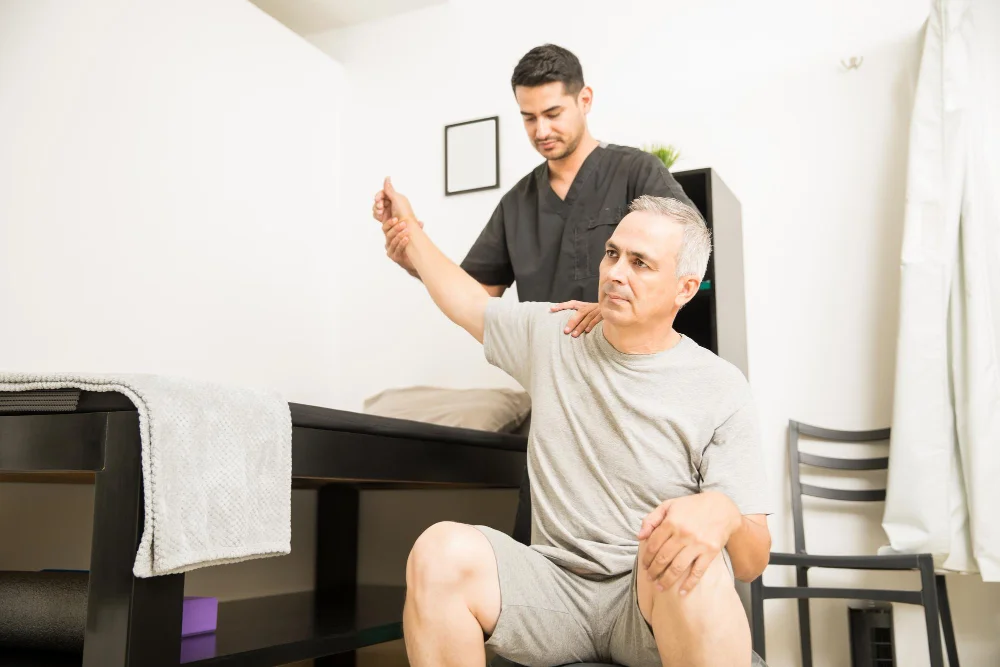How Can Chiropractic Help Seniors
Older adults benefit from gentle chiropractic care that prioritizes safety and function. A thorough assessment guides low force techniques that match bone density. Targeted adjustments ease back, neck, and joint pain. Mobilization improves range of motion and upright posture for daily tasks. Better spinal mechanics enhance balance and reduce fall risk. For families asking how can chiropractic help seniors, individualized plans and home guidance support steady progress.
Benefits of Chiropractic Care for Seniors
Chiropractic care supports aging joints with precise and gentle methods. It addresses mechanical pain sources in the spine and extremities. Improved joint motion decreases stiffness and eases morning discomfort. Better alignment reduces strain on discs, ligaments, and muscles. Many seniors walk, turn, and reach with greater ease. Personalized care plans often reduce reliance on pain medication. Sleep and mood improve as night pain settles. These outcomes explain how can chiropractic help seniors in practical terms.
How Targeted Spinal and Joint Adjustments Reduce Back, Neck, and Joint Pain
Targeted adjustments restore motion to stiff spinal and peripheral joints. Restored motion unloads irritated tissues and reduces inflammation. Muscle guarding relaxes as joints move correctly. Neurological input normalizes, which calms pain signaling. Patients often report less back pain and neck pain. Peripheral joint pain improves when alignment and glide are restored.
How Chiropractic Improves Range of Motion and Posture for Daily Activities
Restricted segments limit bending, turning, and overhead reach. Mobilization and specific adjustments free these segments within comfort. Range of motion increases, which supports safer walking and lifting. Posture coaching strengthens deep stabilizers for upright alignment. Even small alignment gains reduce fatigue during chores. Improved movement confidence carries over to hobbies and travel.
How Better Spinal Mechanics Support Balance and Reduce Fall Risk
Balance relies on accurate signals from joints and muscles. Stiff segments distort these signals and reduce stability. Adjustments restore motion that improves joint position sense. Core activation training enhances stepping and turning control. Your chiropractor teaches progressive balance drills you can practice safely. Improved mechanics and practice lower fall risk in daily life.
Is Chiropractic Care Safe for Older Adults
Safety is central to senior chiropractic care. A thorough history and exam guide every decision. Techniques are selected to match bone density and comfort. The plan adjusts as health status evolves. This section explains how can chiropractic help seniors while keeping safety the top priority.
Safety Screening for Osteoporosis, Fracture Risk, and Neurological Red Flags
Many seniors have low bone density. We review fracture history, falls, height loss, and steroid use. We consider prior DEXA results and FRAX estimates. Gentle palpation and motion tests check tissue tolerance. If fracture risk is high, thrust adjustments are avoided. We also screen for neurological red flags before care.
When a Chiropractor Co-manages or Refers for Medical Evaluation
Chiropractors co manage when safety or outcomes improve with teamwork. We refer for urgent imaging if fracture is suspected. Chiropractors refer immediately for progressive weakness or bowel and bladder changes. We send fever with spine pain for medical evaluation. Severe unremitting night pain prompts medical review. We coordinate ongoing care with primary care and specialists. Shared plans ensure safe progress and clear communication.
Chiropractic Techniques Adapted for Seniors
Senior chiropractic care uses methods adapted to bone density and comfort. We begin with history, goals, and a focused examination. Techniques are chosen to protect joints and soft tissues. Visit plans progress gently as tolerance and function improve. This approach explains how can chiropractic help seniors in everyday life.
Low-Force Instrument-Assisted Adjustments and Drop-Table Methods
Instrument assisted adjustments deliver precise forces with minimal joint stress. The tool allows controlled depth, speed, and direction. It suits patients with osteoporosis, frailty, or pain sensitivity. Drop table methods use segmented cushions that move under the body. The slight drop reduces resistance and disperses force safely. Both methods aim to restore motion without excessive twisting. They also reduce muscle guarding around irritated segments. Care remains comfortable while producing measurable functional gains. Objective measures include range, gait quality, and pain scales. Findings guide the next session and long term planning.
Flexion-Distraction and Gentle Mobilization for stenosis and Disc Degeneration
Flexion distraction uses a table that gently bends and glides the spine. This motion decreases disc pressure and opens canals around nerves. It suits lumbar stenosis and degenerative disc conditions. Patients often feel relief from leg pain and back tightness. Gentle mobilization adds graded oscillations within a safe range. These movements improve glide, hydration, and joint nutrition. We combine mobilization with cues for relaxed breathing. Sessions progress as tolerance and stability increase. We avoid end range loading to protect vulnerable structures.
Soft-Tissue and Myofascial Work to Ease Muscle Guarding
Muscle guarding protects painful joints but limits motion. Soft tissue therapy reduces spasm and improves circulation. We use trigger point pressure and slow sustained stretching. Instrument assisted methods address stubborn fascial adhesions. Myofascial release restores slide between layers and decreases tenderness. Therapy prepares tissues for comfortable adjustments and mobilization. Home care includes heat, hydration, and gentle movement. Education helps patients pace activity without flare ups. We progress pressure based on feedback and tissue response.
Conditions Chiropractors Commonly Manage in Seniors
Senior patients often present with several overlapping spine and joint issues. We assess how each problem limits comfort and function. Care plans target safe motion, pain control, and daily abilities. Techniques and visit frequency match bone density and tolerance. Progress is tracked with range, strength, and activity measures.
How can Chiropractic Help Seniors With Osteoarthritis and Degenerative Disc
Osteoarthritis stiffens joints and irritates nearby tissues. Degenerative discs reduce spacing and load sharing between segments. Evaluation identifies painful structures and aggravating movements. Gentle joint mobilization restores controlled glide within comfort limits. Targeted adjustments redistribute load across adjacent segments. Traction and positioning reduce compression during recovery. Soft tissue therapy calms guarding and improves circulation. Education covers pacing, posture, and task modification. Home routines include short walks and easy mobility drills. Goals focus on chairs, stairs, and restful sleep.
Sciatica and Lumbar Radiculopathy
Sciatica begins when lumbar nerve roots become irritated. Symptoms may include leg pain, tingling, or weakness. History and examination confirm the affected levels and patterns. Table based flexion can lower disc pressure and ease leg pain. Segmental mobilization restores motion without provoking symptoms. Nerve glides improve mobility and reduce sensitivity. Directional preference exercises reinforce positions that feel better. We monitor strength, reflexes, and sensation each visit. Progressive deficit triggers urgent medical review. Most plans pair clinic care with daily walking.
Neck Pain, Cervicogenic Headache, and Age Related Posture Changes in Elderly
Neck pain often involves stiff facet joints and tight muscles. Cervicogenic headache starts in the upper neck and refers upward. Assessment screens for vascular or neurological concerns before care. Precise low amplitude adjustments restore motion in restricted levels. Myofascial work reduces trigger points and tenderness. Deep neck flexor and shoulder stabilizer training improves support. We refine pillow choice, reading height, and screen position. Gentle gaze and balance drills improve orientation and steadiness. Outcomes are tracked with pain measures and rotation range. Home practice maintains clinic gains between sessions.
Chiropractic Care for Seniors at Ashburn Village Chiropractic
Ashburn Village Chiropractic has served the Ashburn community since 2000. Patients see Dr. Jonathan Solomon at every visit for continuity. Dr Jonathan Soloma is licensed by the Virginia Board of Medicine and nationally board certified. He earned his Doctor of Chiropractic from Life Chiropractic College, cum laude. Senior care plans are individualized after a thorough history and focused examination. On site X rays are available when clinically appropriate. Techniques emphasize comfort through low force adjustments, flexion distraction, and soft tissue treatment. Progress is measured with mobility, balance, and function goals that matter to seniors. This approach answers how can chiropractic help seniors with safe, clear steps.

